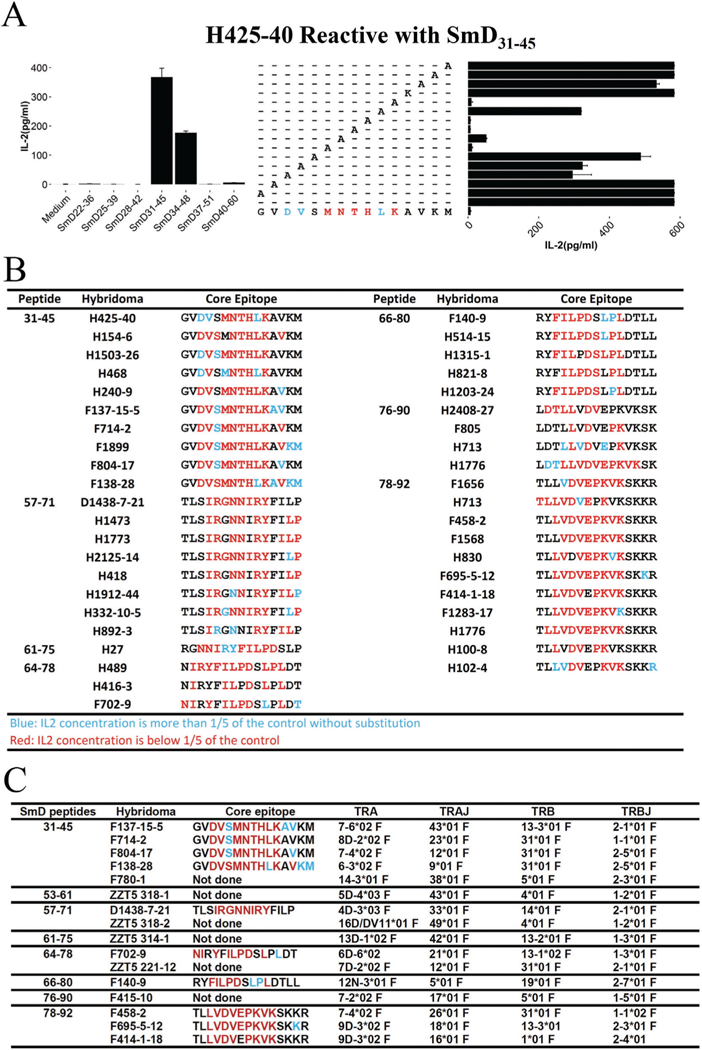Figure 2.

Determination of multiple HLA-DR3 (DR3) restricted cell epitopes on SmD and polyclonal TCR usage for recognising T-cell epitopes. (A) Determination of the core epitope by alanine substitution. Hybridoma H425–40 was incubated with SmD31–45 with alanine-substituted peptides with splenic cells from DR3 transgenic mice as antigen-presenting cells (APC) for 20 hours at 37°C. Supernatants were assayed for interleukin (IL)-2 by ELISA. In the case of alanine, lysine-substituted peptide was used. When the IL-2 responses to the A-substituted peptides were decreased to <20%, the amino acids (aa) were coded by red (M, N, T, H, K at SmD aa36, 37, 38, 39 and 41). When the Il-2 responses were >20%, the aa were coded by blue (SmD aa33, 34 and 40). The core amino acids for SmD31–45 was assigned to be SmD33–41. Hybridoma H425–40 should respond to SmD33–41 with conservative substitutions allowed at aa36, 37, 38, 39 and 40) and with all aa substitutions at other positions. (B) Summary of the core T-epitopes restricted by HLA-DR3 and recognised by T-T hybridomas. Each hydridoma recognises unique T-epitopes. (C) Multiple TCRs are used by T-T hybridomas reactive to HLA-DR3−restricted SmD T epitopes. TCRs are used in responses to the T-epitopes within each SmD 15mer.
